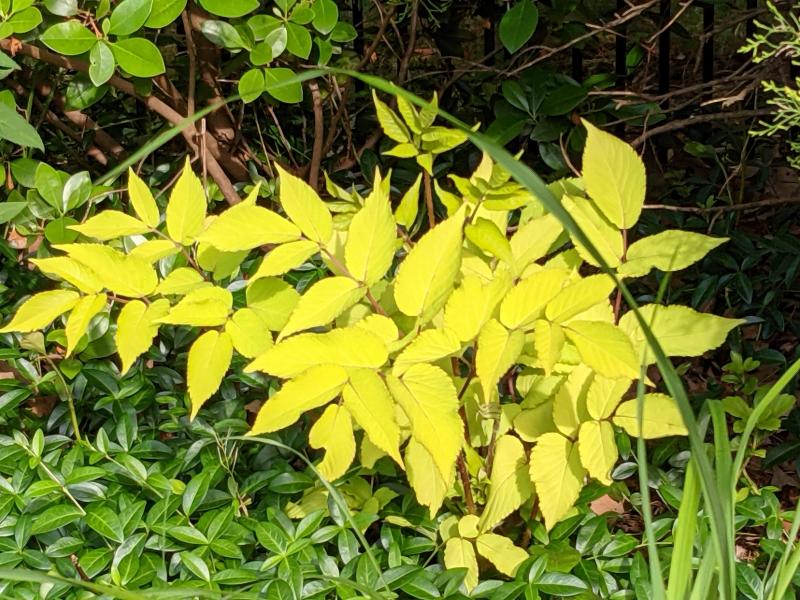Mill Pond Garden is one of three venues featuring special and unusual plants in the Cape Farm and Garden Tour set for 9 a.m. to 12 p.m., Saturday, June 5. The tour also includes Lavender Fields at Warrington Manor LLC and the Shimizu private garden in Lewes, with proceeds to local food banks and pantries. Tickets are available on the website of Mill Pond Garden, the hosting venue, at millpondgarden.com.
Special plants can add surprise and delight to any garden, and much can be learned at each of the tour sites about some unusual plants.
Mill Pond Garden will share some outstanding plants that offer architectural design or color impact, or solve problems, such as resisting deer browsing or providing color in shade. Many of them have not long been available in nurseries and are little known. They deserve to be discovered.
Some great unusual plants at Mill Pond Garden can be ordered online or found locally at Pepper’s Greenhouses in Milton. Part of Mill Pond Botanic Garden’s mission is to provide examples of outstanding choices for local gardens.
One recent introduction is the sun king aralia, a perennial with large bright-golden leaves, discovered and introduced by American plant explorer Barry Yinger. This beauty likes shade to part sun and can quickly grow to about three feet high and wide. It is deer resistant, which matters a lot to gardeners in the Cape Region.
Most people recognize a few magnolias, but few local gardeners have seen the magnolia figo, or as it is called in its native Deep South region, the banana shrub. This deer-resistant evergreen grows to about eight feet in five years, in sun to part shade, and has three-inch green leaves. In mid-spring, the inch-and-a-half-wide banana-yellow flowers with purple edges bloom prolifically, even on young plants. Their strong, delicious fragrance, a little like ripe bananas and white magnolias combined, can perfume a garden to 50 feet away from noon to early evening.
Fatsia japonica is another little-known garden wonder. Deer might nibble on fatsia, but they usually don't devour it. The plant adds dimension to a shade garden with its big, broad leaves in both variegated and non-variegated varieties, and dramatic clusters of white flowers in the fall and early winter. It is an evergreen shrub with gigantic leaves like a splayed hand with pointed fingers, offering great architectural impact.
Hakonechloa aurea, Japanese forest grass, is an ornamental grass that takes shade, and is deer resistant and noninvasive. It is a beautiful yellow-green with an arching rounded shape to about 18 inches high. The leaves are wide enough to catch light breezes that make the mound move gracefully. It does well in partial shade and is hardy enough to make great potted plants or to border a bed in part shade.
Another wonder is the American native honeysuckle Kintzley’s ghost, which looks like a moving white ghost at night or in dim moonlight if there is a slight breeze. Even in daylight it shimmers as the white bracts dance in the air currents. This honeysuckle only grows to about seven feet high and has lateral branches about two feet on each side, all sporting silver-dollar-sized flower bracts with a bluish silvery-white coating that reflects any ambient light. Deer do not browse on Kintzley’s ghost.
Michael Zajic of Mill Pond Garden said, “We get more questions about Kintzley’s ghost than any other plant once its bracts are open, which they are now and will be for the Cape Farm and Garden Tour on Saturday, June 5.”
Other recommended plants Saxifraga stolonifera, aka strawberry begonia, and ilicium Florida, the anise shrub. Not just a houseplant, strawberry begonia is a wonderful ornamental ground cover with white spring flowers, useful for shady spots especially where there is little soil, such as over the roots of maples and other surface-rooted trees or under shrubs. Anise shrub is an evergreen native offering a showy, yellow-leaved variety with red stems that grows to about eight feet in eight years, smells wonderfully of licorice, and is also not bothered by deer.
On this garden tour, guests can see many novel options for good results in the Cape Region.























































